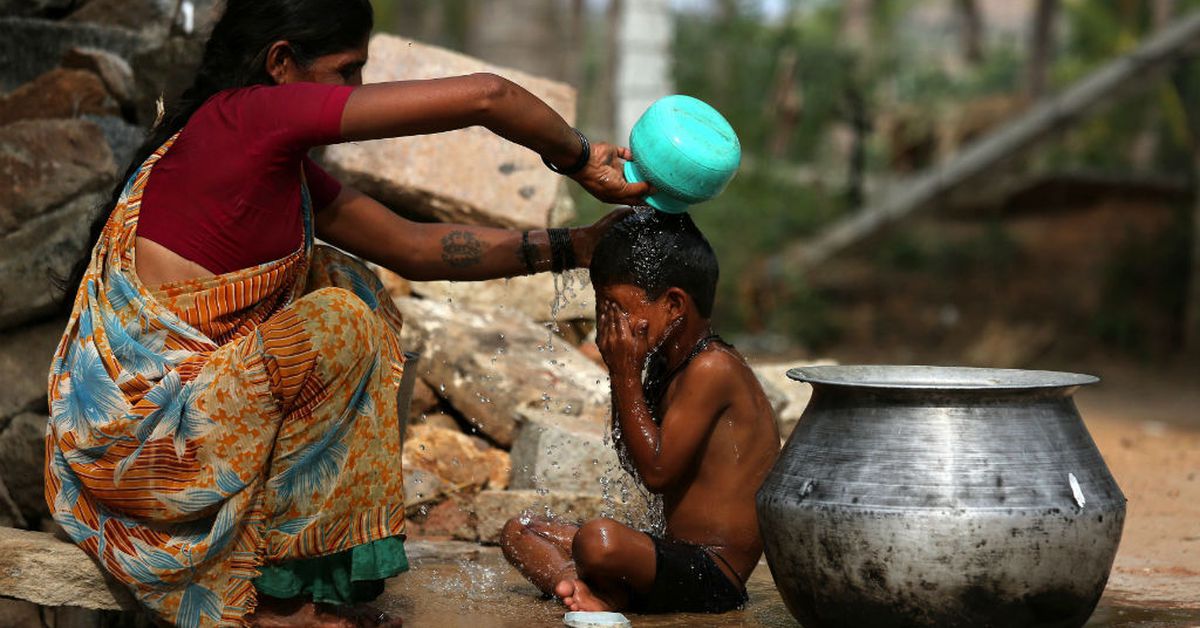India, on the verge of becoming the most populous country in the world, faces a serious threat to human survival due to increasingly frequent and intense heat waves. India's National Weather Bureau is forecasting a rise in temperatures in the coming weeks of March, following the hottest February since 1901. There is growing concern that last year's record heat wave, which caused widespread damage to crops and blackouts of several hours across the Indian territory, can be repeated. The high temperatures, reaching 50 degrees Celsius, severely affect India's population of 1.4 billion, especially those in densely populated cities without well-ventilated housing or air conditioning.
The Asian country is in an unusual situation with regard to global warming, with factors such as the urban heat island effect – a phenomenon in which densely populated urban areas with many buildings absorb and retain more heat than areas surrounding rural areas, creating a higher average temperature in the city – and deforestation making the situation even worse. The hotter and longer lasting the heatwaves become, the more likely fatalities will be, and with base temperatures already high in India, every slight increase in temperature in crowded places poses an imminent risk to the minimum conditions for survival of a population, which is already the second largest on the planet. More intense heat waves, which keep temperatures high for longer periods, usually result in a higher number of fatalities and, in India, this situation is aggravated by the rapid population increase that has occurred in recent decades. It is essential that measures are taken to mitigate these effects, including urban planning guidelines that prioritize green spaces, shade and ventilation in the construction of buildings, investments in research and development of low-energy cooling solutions and incentives for the use of green roofs, cool roofs and planting trees to reduce the urban heat island effect.
The most worrying danger lies in the fact that the base temperature in India is already very high reaching readings in excess of 40°C. The projections for May/2023 are that the only regions on the planet with a temperature comparable to North India will be the Sahara and some parts of the Arabian Peninsula, both very sparsely populated. The consequences for Indian society are far-reaching: prolonged periods of heat waves cause significant desiccation of the soil over large areas, in addition to the obvious implications for agriculture, which can affect the onset of the monsoon period in a month, in addition to compromising water security and even cause localized floods, when heavy rains reach dry soils that are unable to absorb them.
Unusually warm pre-monsoon periods are also associated with:
- decrease in labor productivity, especially in outdoor sectors such as agriculture and construction;
- increased demand for cooling, which can overwhelm the electrical grid and lead to increased greenhouse gas emissions;
- and general health hazards, such as heat stroke, which disproportionately affect children, the elderly, and low-income communities.
Developed Countries Can Export Projects in Buildings to Help the Underprivileged
In this context of combating global warming, many ideas are presented on how to prioritize green spaces, shade and ventilation in the design of buildings in urban planning policies. Low energy cooling solutions – such as passive systems – must be invested in by companies, as well as the design of energy efficient buildings. In communities, reducing the heat island effect can be achieved through cool roofs, green roofs and tree planting. Such measures are becoming increasingly popular in Mediterranean cities, such as Parque Diagonal Mar in Barcelona, Spain, which has a green roof with more than 60 species of native plants; the Solaria Building in Nicosia, Cyprus, which uses solar energy and has a passive cooling system; and the GreenAacademy in Valencia, Spain, a university building that uses a natural ventilation system and a green roof to reduce environmental impact.
Green buildings are an important solution to reduce heating in cities. They are designed with the aim of being energy efficient, with ventilation systems, natural lighting, thermal insulation and the use of sustainable building materials. These buildings are capable of reducing energy consumption by up to 30% and greenhouse gas emissions by up to 35%, which helps combat global warming. Green roofs are another popular solution to reduce district heating – these roofs are covered with vegetation, which helps to reduce the temperature on the roof and inside the building. They help reduce stormwater runoff and improve air quality.
Rising temperatures and more frequent and intense heat waves pose a major challenge for India and other cities in similar climate regions. Viable solutions, such as the implementation of green buildings, ecologically correct roofs and low energy cooling systems are already a reality in countries that implement serious programs to curb the effects of global warming and need to be considered for developing countries. It is important to encourage and implement these solutions in places that are already drastically feeling the effects of climate change – as is the case in India – to minimize the impacts of global warming and ensure a more sustainable and healthy future for all.




